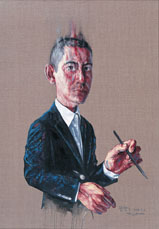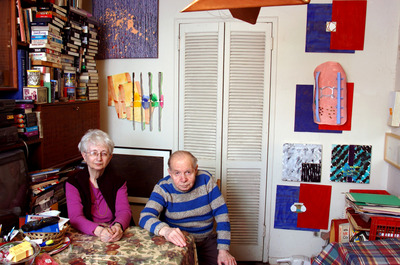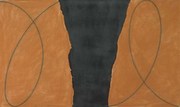There’s no debate over the state of the contemporary art market — it’s pretty dead. But the once high-flying Chinese contemporary art market, well, that may or may not be equally depressed.
On March 10, The New York Times said it was, citing recent auction results and quoting Zoe Butt, the director of Long March Space: “The era of Chinese contemporary art commanding such high prices is over.” Long March recently closed two of its three galleries in Beijing.
On Mar. 11, Pace Wildenstein chairman Arne Glimcher fought back, publishing a piece in The Daily Beast asserting that “I’ve heard people saying ‘the China thing’ is over but that’s not true.” He provided no backup, though, and failed to disclose his self-interest. (A commenter called him out, telling readers about Pace’s new gallery in Beijing and its representation of two prominent Chinese artists.)
A few months back, when I interviewed Belgian Baron Guy Ullens — who has collected these works works for more than 20 years — for the April Town & Country, he said the days of everything-sells were over.
Yet, next Thursday, Acquavella Galleries — always highly attuned to what sells —
 will open the first U.S. solo show, 20 works in all, of Zeng Fanzhi (right, Self-Portrait, 2008). Zeng holds the auction record for Chinese contemporary paintings, $9.7 million.
will open the first U.S. solo show, 20 works in all, of Zeng Fanzhi (right, Self-Portrait, 2008). Zeng holds the auction record for Chinese contemporary paintings, $9.7 million.
Ullens, who recently announced that he was selling part of his huge collection at a May auction (according to Bloomberg), provided some very interesting context about the coming years, though: “Before 1998 or 2000, the Chinese were not producing a lot. The good stuff of the old times is limited….[But] There are 50,000 to 70,000 going to art school in China right now. You can see the wave coming.”
Ullens, who with his wife cofounded the Ullens Center for Contemporary Art in Beijing, was looking forward to seeing the work of that wave, which will eventually make its way here. That could be energizing to contemporary art.
But consider this: So far, only about 40 contemporary Chinese artists have gained art-historical recognition, according to Yishu: The Journal of Contemporary Chinese Art. Is there an appetite for so many more? Will the weeding take place there, or here?
Photo: Acquavella Galleries



